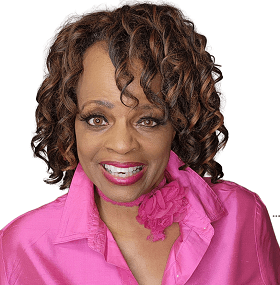
Shannon Belzer didn’t want to wait for something bad to happen to one of her agents before providing safety training. “I love [my agents], and they are important to me,” says Belzer, managing broker of ReeceNichols, REALTORS®, in Kansas City, Mo. Like a growing number of brokers, Belzer is being proactive by providing her team with tools and knowledge to stay safe on the job.
When Belzer reached out to me to schedule a program for her agents, she said, “Agents will not show up for training unless it is a class that teaches them how to make more money.” That conversation was my wake-up call.
Though agents need to learn realistic and effective safety techniques, such training must also be engaging. So, as important as it is to choose a qualified instructor for your safety program—which I discussed in my last article—the content of the course is even more crucial.
As a result of my conversation with Belzer, I decided to focus on adding quantitative value to my training. I had to show agents how to utilize safety to become more profitable, as well as make it home safely every night. So, I created a program that allows agents to share safety and security advice with the consumer—buyers, sellers, and even FSBOs—including supportive tools such as a security checklist for sellers, a safety and security tip sheet for FSBOs, and a resource list for buyers.
For other broker-owners and managers who want to plan a quality safety program, you need to begin by assessing the needs of the agents to find what’s best for your office. The distinct needs of the audience should drive the training discussion. Some agents are going to attend simply because they feel obligated or need to acquire continuing education credits. Other agents will show up because they really want to be there. These are the agents hungry to learn new techniques and safe work practices. Finally, some agents will be there because they have been victimized or know someone who has been a victim. They will be looking for reassurance as well as a way to prevent a recurrence. The safety program must speak to agents in each of these categories in order to fully reach them. It also must be new and fresh information; agents will not invest time in rehashed content.
Robin Dayton, broker-owner of Dayton Dynasty Realty LLC in Lee’s Summit, Mo., says her newer agents don’t prioritize safety because they are busy learning the business. But she sees it as her responsibility to provide safety education, so she made it a mandatory part of her rookie training program. “They are too new to the industry to understand the hidden dangers in this business,” she says.
With the news of the lawsuit against real estate brokerage Crye-Leike, brought by the family of one of its agents, Beverly Carter, who was murdered in 2014, Dayton is more adamant than ever about providing safety education that won’t leave her company exposed. “I absolutely believe that quality and effective safety training will protect my company from any liabilities in case of a crime against an agent,” she says. As it stands now, agents are independent contractors and brokers aren’t legally responsible for their safety. However, this case could set a new precedent for brokers’ liabilities.
Here is a list of five essentials every safety program should include.
1. The Instructor: Choosing the right instructor is the foundation of a good safety program. I go into detail on this point in my first article in this series.
2. The Content: A safety class must be based around actual, realistic work practices. The goal is to show agents how to incorporate safety systems on a daily basis. Oftentimes, cookie-cutter safety training may spout the same generic safety tips, such as not hosting an open house alone or not showing a property after dark. These are well-intentioned goals but not always realistic in the course of commission-based sales work. The training must offer safe workarounds, or safer alternatives, to long-standing sales practices.
3. Historical Data and Real-Life Experiences: Part of an effective safety program includes information on past crimes against agents. The goal is not to induce fear but to break down crime data, which you can find though the U.S. Department of Labor, and offer real-life examples that agents can relate to. As the saying goes, “Those who don't know history are doomed to repeat it.”
4. Storytelling: There is no better way to learn than by example. But the educator must be able convey the message properly. That means storytelling. Hearing what has happened to other agents and how they got out of a dangerous situation offers invaluable insight. Instructors should also know how to sympathetically and tactfully share experiences of agents who’ve been victimized.
5. Takeaways and Resources: Agents need to be able to walk away from a safety program with the ability to implement the procedures and practices they learn easily and immediately. A well-designed program will incorporate actual handouts and takeaways as extra value. The seller security checklist and FSBO safety tips are examples of what I provide. Takeaways should also include examples of safety tools. When the National Association of REALTORS® surveyed its members for the 2017 Member Safety Report, 19 percent chose pepper spray as their preferred nonlethal weapon. Product education covering legalities and proper usage training is ideal. It’s also beneficial if an educator can offer home security tips. That’s a value-add agents can pass on to their clients.
Finally, despite safety being a serious topic, Belzer says making training pleasurable is also key. “Instructors need to make it fun for the agents,” she says. “Make them pay attention, and keep it informative.”
For more information, I’ve created a checklist for a quality and effective real estate safety program.










